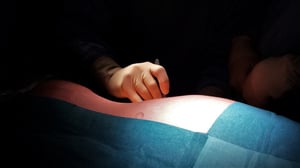Replacing strips of burnt or necrotic skin (due to various kinds of trauma or illnesses) without any size restrictions and without the need for skin grafts: this is what an innovative prototype of a mobile 3D printer promises to do, developed by bioengineers from the Wake Forest Institute for Regenerative Medicine (USA), who described the results of their study in the journal Scientific Reports, part of the Nature group. The researchers focused on the two main cell types found in skin: fibroblasts, which make up a kind of “grid”, and keratinocytes, which fill it.
In an experiment performed on laboratory animals, the researchers took a biopsy of these two types of cells (a common practice in any skin graft) and grew them together with a biocompatible matrix in gel form, until the mixture reached a sufficient volume. It was then added to a kind of tank in the 3D printer. At the same time, a high-precision scanner examined the surface to be treated, and the data was reprocessed by a computer. Finally, on the basis of this map, the solution containing the cells and the gel was distributed by the printer, layer after layer, on the wound, until the strip of missing skin was covered completely, thus initiating the regeneration process.
To have an idea of size, the printer is a parallelepiped slightly longer than one meter, and can slide over the area of the body to be treated, issuing a gel-cell solution through special nozzles.
The potential advantages of this system (if these successful results are also confirmed by other studies) are clear: in addition to presenting no risk of rejection, the printer – which processes the actual data of the injury – can repair the skin with pinpoint accuracy, with regard to both its size and depth, respecting the different areas (some deeper, some less deep), with a precision that is difficult to achieve with a classic skin graft.
Tests are continuing for now, with the intention of performing the first experiments on humans as soon as possible. “In the United States alone”, write the researchers, “millions of people suffer from chronic or non-healing wounds, such as diabetic ulcers, not to mention burns”. Treating these wounds is particularly costly because often multiple and complex treatments are required. The new 3D mobile printer, which can be taken to the bedside of the patient, however, appears to be able to guarantee much more versatility and probably, in the future, also lower costs, compared to current procedures.

